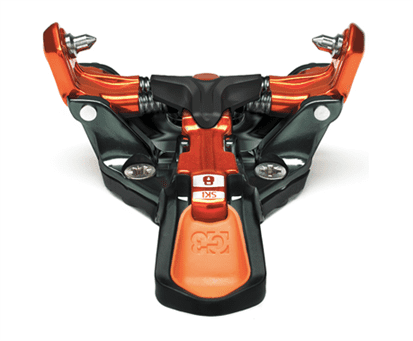In this occasionally repeating feature we take a deep dive into the R&D behind some of the most interesting gear in the ski world.
When G3 launched the Ion in 2014 it was the company’s second ski touring binding, an attempt to improve on the Onyx, their first try, and to compete with the minimalist bindings leading the backcountry march. G3 learnt a lot from the Onyx before they set out to build the true “tech” or pin binding and it showed. Where the Onyx suffered plenty of criticism the Ion was immediately liked by reviewers and skiers alike.
Light, attractive and solving some of the constant complaints dogging other tech bindings it was proof that G3’s willingness to learn from its mistakes had worked. Since the inaugural Ion G3 has launched tweaks and improvements almost every year. There are now three models, a 10 and 12 DIN and a lightweight version.
We talked with Cameron Shute, G3’s director of product, to find out more about the design and evolution of the Ion. (The interview has been edited for space, clarity and grammar.)
What was the original goal when you set out to design the ION?
We set out with a goal of, as much as possible, having the binding disappear from the ski touring experience from a user point of view. It sounds weird, but basically when a binding is doing it’s job, and it’s really easy to use and you don’t really notice it or need to fiddle with it. Instead you can focus your energy on skiing and enjoying your day.
What did you want to do differently compared to other tech bindings?
In our design process we identify problems with products and use those issues as opportunities to improve the state of the art. We wanted to offer a binding that appealed to many users due to it’s simplicity, it’s performance and it’s design. A few of the key standouts that make the Ion what it is are: easy step in, snow clearing at the toe, toe jaw retention and easy to locate and flip heel lifts. These are the main touchpoints of the binding that the user interacts and experiences the most.
What were the biggest challenges to overcome? How did you overcome them?
Probably the biggest challenges related to making major modifications to the “standard tech binding” release was to overcome the pre-release issues that they’re susceptible to. We wanted to somewhat reinvent the wheel, but through a platform people knew and trusted. That process actually started with the development of our first AT binding [the Onyx]. I’d say that reinventing the toe jaw dynamics while allowing easy step in was probably the largest challenges. The intelligent brake design, where it only activates on your first step in, was probably the second hardest.
G3 claims that the Ion is better at not pre-releasing. Basically, the toe opening when it’s not supposed to. Can you explain why this is?
We didn’t just grab a tech binding toe and copy it. Instead we redesigned the release curve of the toe, so that it was able to hold on longer and absorb more impact energy than other designs. All tech bindings cock open because they go through an overcentre position where the springs force the jaws open rather than hold them close. We shifted the Ion’s over centre position significantly closer to the release point, so it could hold on longer. In simple terms, our toe jaws have to rotate further before they want to cock open and stay open.
How long did it take to design the ION from basic idea to ready to launch? How many iterations did you go through?
I believe we started the ION in July 2012, but a lot of the fundamental ideas started with the Onyx binding that started in 2006. In the 18 months from project start to launch we made seven heel iterations and five toe iterations.
What part of the binding are you most proud of?
From a product stand point, the ease of step in is what makes me the most proud. I had a 63 year old woman tell me that the fact that it’s so easy to get into she doesn’t need to bend down. She’s been able to get out and tour more because of it. That makes me super happy!
RYAN REPORT is a frequent web post by Ski Canada magazine’s technical editor, Ryan Stuart.





